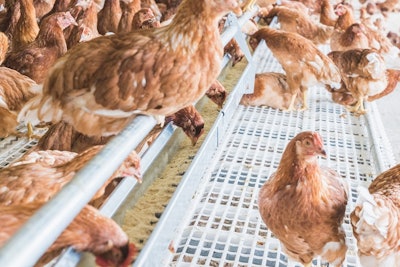
A recently published research study identifies the cage-free conversion challenges the U.S. egg industry faces related to costs, construction, lack of consumer demand and insight concerning what consumer and producer perceptions are on the transition.
Key consumer perspectives identified include:
- 55% of consumers are primarily motivated by price and do not discriminate between caged and cage-free eggs in the grocery store.
- Consumers prefer government policies to subsidize the transition to cage-free or mandatory labels to policies that mandate producers adopt certain housing practices. Amongst the policies to restrict housing practices, consumers prefer minimum cage size requirements to the outright ban of conventional production.
- 56% of consumers are unaware of whether their grocery store has made a cage-free pledge, and only 19% believe their store has made a pledge.
Key producer perspectives identified include:
- Producers expect revenue from cage-free housing to be 8% higher than conventional systems, on average. However, costs are estimated to be, at minimum, 8-19% higher, on average, depending on the category of expense. This is mostly due to the additional labor and capital costs associated.
- On average, producers believe cage-free production will be 51% of total U.S. egg production by January 2026.
- Producers will be more likely to transition to cage-free production when cost-plus contracts are available and at higher anticipated return on investment (ROI) levels.
“This research confirms what egg producers have known – cage-free transitions are extremely expensive, take years to implement and must be done in active partnership with their retail customers,” said Chad Gregory, agricultural cooperative United Egg Producers (UEP) President and CEO.
“Further, the study sheds light on one of the greatest challenges – that grocery shoppers do not understand transition deadlines and largely are unwilling to pay the premiums necessary to make the transitions cost-effective for egg farmers and their retail customers.”
David Fikes, trade association Food Marketing Institute (FMI) Foundation Executive Director, added, “While eggs are on most consumers’ minds, this research adds new information regarding the shopper’s willingness to pay for sustainability and animal welfare-related poultry practices and what they ultimately want their grocer to stock.”


















